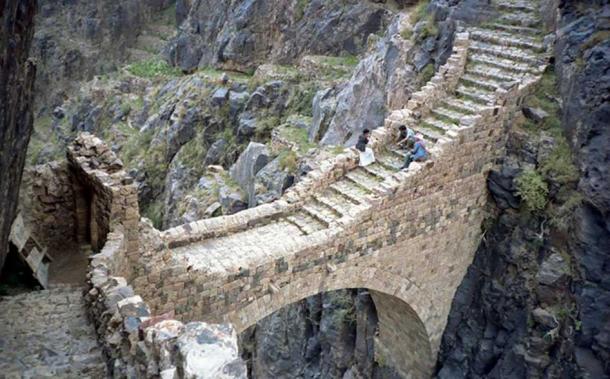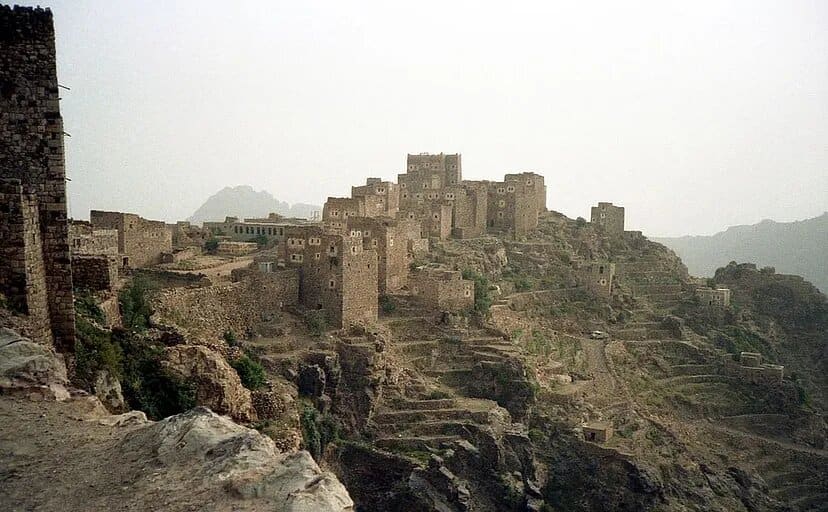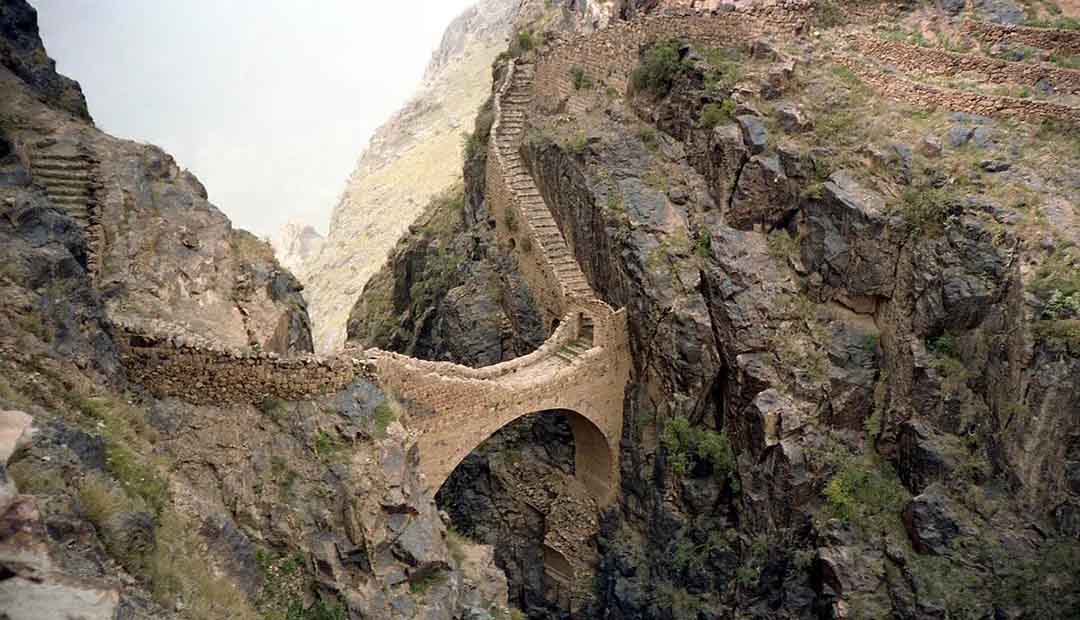The Shaharah Bridge in Yemen: A Marvel of Strategic Defense and Community Connection
The Shaharah Bridge was built in the 17th century in Yemen and though it may just look like a regular bridge at first, it has interesting stories connected to it. The structure was designed to fall apart in minutes if Turks tried to invade and it was also a logical solution to another age-old problem.
Stretching across a 300-foot (91-meter) deep gorge between two mountains, the bridge is still commonly used by citizens in the neighboring villages. The bridge can be found in the Ahnum Mountain Range in northwestern Yemen in the ‘Amran governorate, approximately 87 miles (140 kilometers) away from the country’s capital city, Sana’a. It connects two mountains, Jabal al Emir and Jabal al Faish, by stretching across a canyon formed where the two come close together. The bridge is 65 feet (20 meters) long and 9 feet (3 meters) wide. It is primarily made of limestone, which is an abundant material in the mountains. The Shaharah Bridge leads to the town of Shaharah.

Bridging Communities
It is not known for how many centuries people have been living in the Ahnum Mountains. Yemen itself is one of the oldest centers of civilization in the world. The country is located at the bottom of the Arabian Peninsula. While most of the peninsula is arid, Yemen is fertile and experiences regular rainfall. From very early on, the country served as a natural conduit for trade between the East African and Middle Eastern kingdoms. Archaeological evidence shows that large settlements existed in northern Yemen’s mountains at least as far back as 5000 BC.
For all the millennia that people lived in those mountains, they were faced with the difficulty of getting supplies. This was both a hassle and a danger. Although Jabal al Emir and Jabal al Faish are within shouting distance of each other, for villagers to trade goods or meet with neighbors, they would have to climb down to the bottom of the canyon and then back up the other side.
Certain segments of the journey were especially perilous. And even if one were a daring and nimble enough climber to make the trek, it would be next to impossible to bring back many goods.
Connecting and Protecting Shaharah
In the 1500s, the Ottoman Turks invaded Yemen and overran Shaharah. Once their freedom was regained sometime in the 1600s, the local Shaharah leader, Al-Usta Saleh, ordered a bridge to be constructed that could be destroyed in the event of another invasion. He hired an architect named Salah al-Yaman. That bridge took three years to build and cost roughly 100,000 French Riyals (an extraordinary amount of money in the 17th century). It was constructed using traditional building tools and local supplies, however,
“no one really knows exactly how the bridge was built especially at that time, but a few legends try to offer some explanations. One story goes that several bridges were built below the major bridge to help with the transfer of supplies up the rugged terrain. Remnants of the minor bridges are still present today. Another legend explains that al-Yaman is credited with building only ten meters [32.5 feet] of the bridge and the remaining ten meters [32.5 feet] were believed to have been completed by an unknown person from the adjacent mountain.” (Khalife, 2015).
The bridge is the only entry point for the town of Shaharah, which also has fortified walls surrounding it. It remained defended and inaccessible until aerial assaults became the norm in the 1960s-civil strife in Yemen. Still, the town (and the world) greatly benefited from Shaharah’s 300+ years of peace.

Life and Tourism in Shaharah
The town is no mere village dwelling looking to be left in peace. Shaharah is the citadel for the Imans of the Zaidi interpretation of Shi’a Islam (not to be confused with the Kurdish Yazidis). In the 10th century, the Islamic scholar and second leader of the Zaidis, Abul Qasim Muhammad bin Yahya bin Al-Husayn, chose the northern highlands as the center of Zaidi religious thought and scholarship. Zaidi mosques and schools can now be found throughout northern Yemen. Today, Zaidis are more commonly known by their political/rebel wing, the Houthis.
Before Yemen was engulfed in civil war, the Shaharah Bridge was one of the most popular tourist attractions for those adventurous enough to make the trek out to see it. With time, it earned the moniker ‘Bridge of Sighs’ because the spectacular sight of a rudimentary stone bridge spanning two mountains left onlookers speechless.




